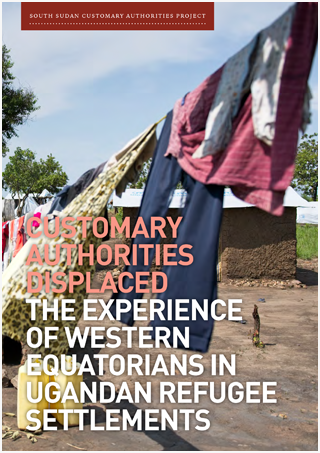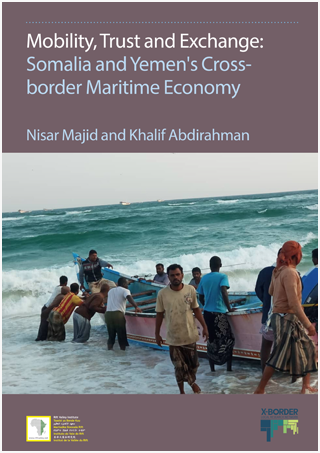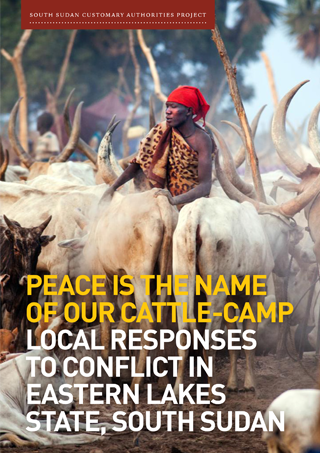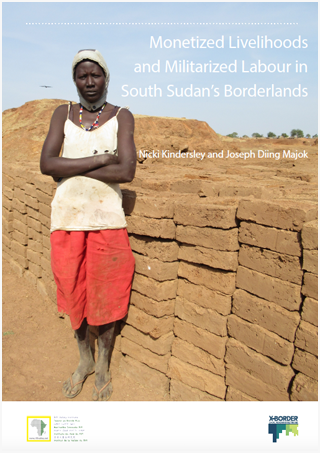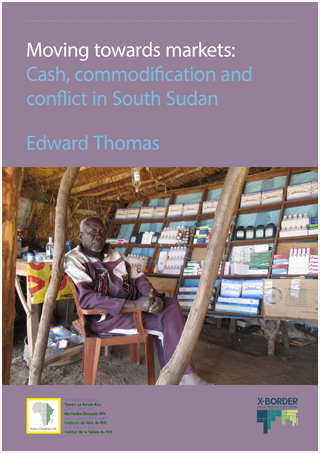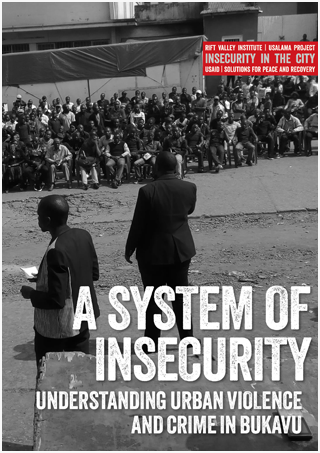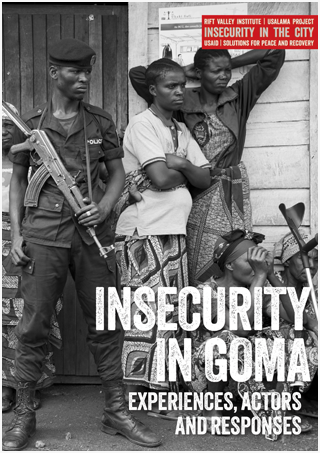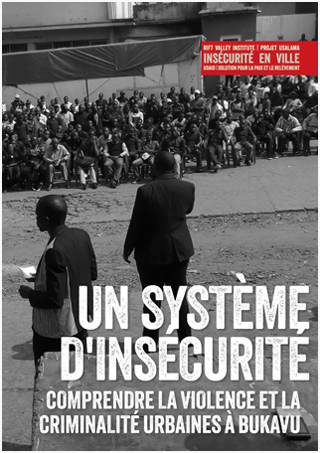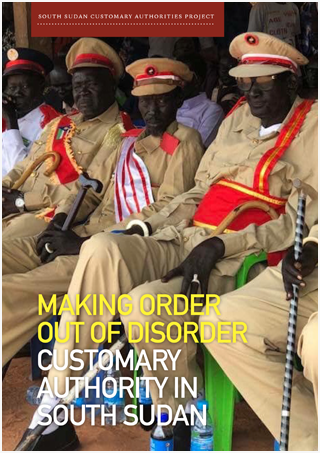South Sudan’s violent conflicts continue to plague its people. An estimated four million South Sudanese have been forcibly displaced since December 2013, and more than a million have sought refuge in Uganda where communities have largely reassembled without their…
RVI publishes books, research reports, research papers, briefings and meeting reports in a range of formats. Publications cover policy, research, arts, culture and local knowledge in the countries of eastern and central Africa. Research publications—books, reports and papers—are peer-reviewed. Some RVI publications are also available in French and/or Arabic.
The RVI is a signatory of the Budapest Open Access Initiative (2001); all publications are free for download in PDF format under Creative Commons licences. The views expressed in books and reports published by the RVI are those of the authors, not the Institute.
SEARCH
PUBLICATION TYPE
LANGUAGE
REGION
COUNTRY
The legacy of Somali piracy, the threat of terrorists transiting between Yemen and Somalia, and the deepening conflict in Yemen, mean international actors tend to view the Gulf of Aden through a security lens. This report outlines the local…
Following the 2005 Comprehensive Peace Agreement (CPA) and the subsequent independence of South Sudan in 2011, many agro-pastoralist and pastoralist areas of the country have experienced an upsurge of livestock raiding, counter raiding and cycles of revenge killing. Eastern…
Northern Bahr el-Ghazal, like much of South Sudan, is in a protracted state of social and economic crisis, rooted in generations of armed conflict, forced resettlements, and a shift towards a cash and market economy. Since the 1980s, family…
Fifty years ago, most households in South Sudan produced the grain they ate, organizing agricultural labour and distributing small surpluses mostly through kinship and other social networks. Now, the majority of households buy most of their food. This transition…
A System of Insecurity: Understanding Urban Violence and Crime in Bukavu examines the role of state and non-state actors in the provision of security, and citizens’ perceptions of, experiences with and responses to insecurity in Bukavu, the capital of…
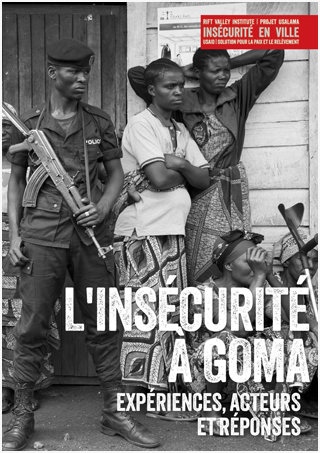
- By Maarten Hendriks, Karen Büscher
- Download
Depuis le début de 2019, une série de meurtres, de vols qualifiés avec violence et d’enlèvements frappe les quartiers périphériques de Goma. L’aggravation rapide de cette criminalité violente a alarmé les habitants de la ville et les a poussés…
Since the start of 2019, a series of murders, violent robberies and kidnappings have taken place in peripheral neighbourhoods of Goma. The rapid rise in violent crime has alarmed city residents and led to calls for the local government…
Un système d’insécurité: Comprendre la violence et la criminalité urbaines à Bukavu examine le rôle des rôle des acteurs étatiques et non étatiques dans la mise à disposition d’outils pour la sécurité, ainsi qu’à la façon dont les citoyens…
South Sudan’s customary authorities play an important role in local government, justice, and as intermediaries or brokers between local communities and the government. While significant attention was paid to the role of customary authorities in South Sudan’s statebuilding project…
Recent Publications
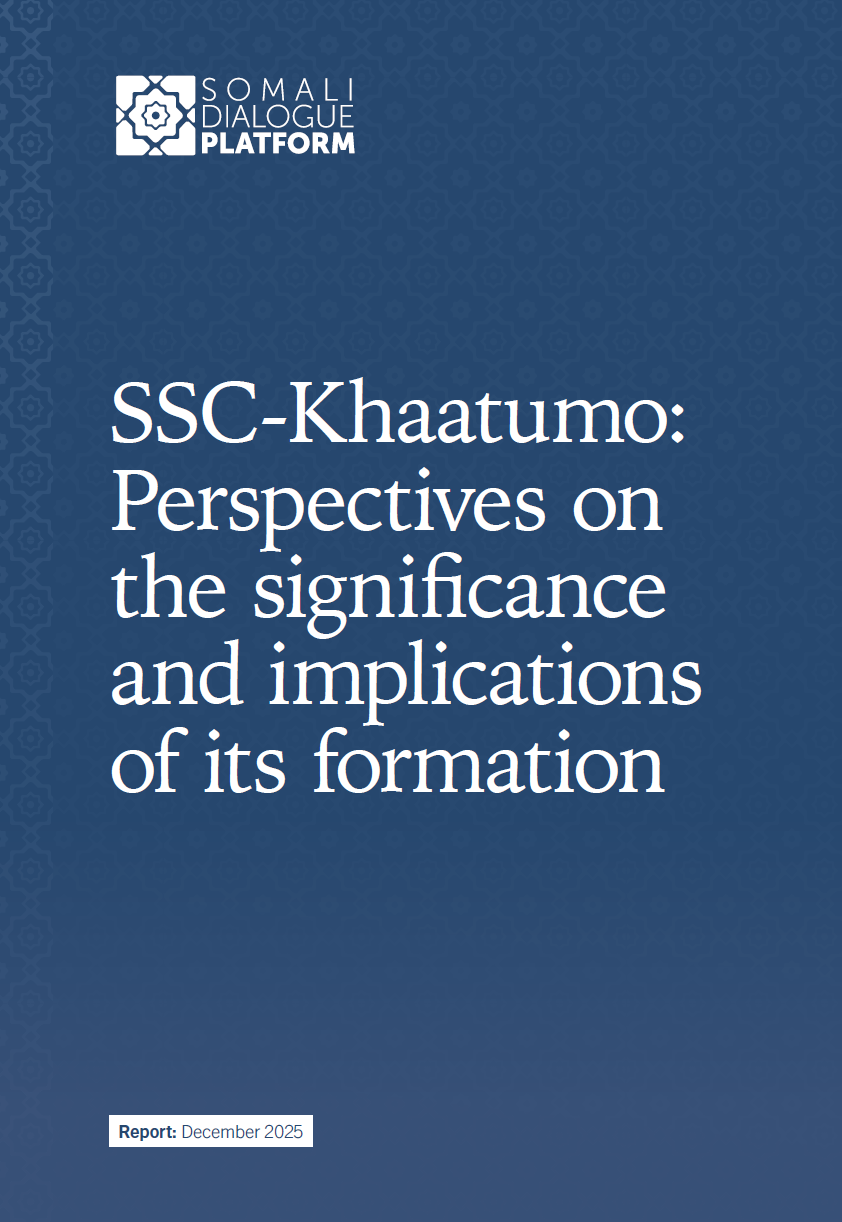
SSC-Khaatumo: Perspectives on the significance and implications of its formation
December 12, 2025
On 15 April 2025, during a visit to the city of Las Anod in Sool, Prime Minister Hassan Abdi Barre officially declared the federal government’s recognition of SSC-Khaatumo (SSC-K hereafter) as a federal member state, marking an important milestone in
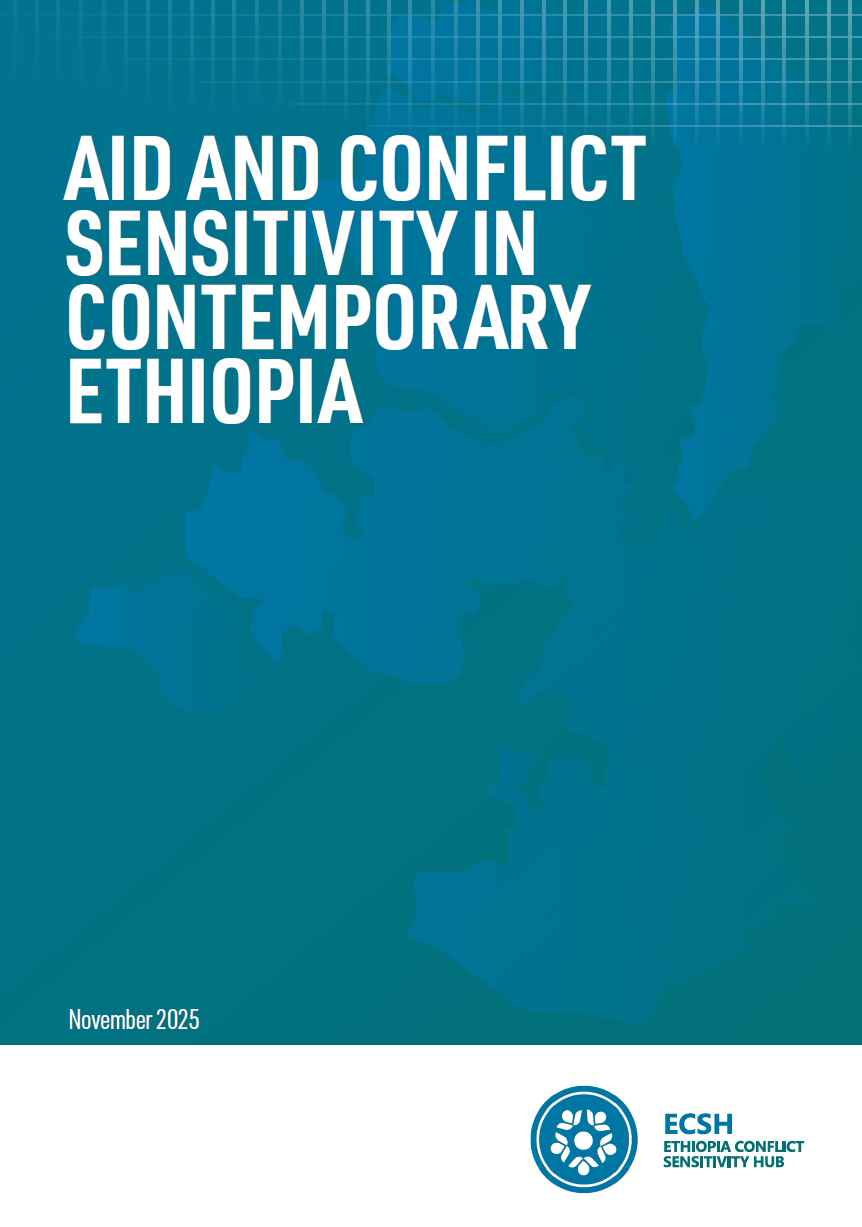
Aid and Conflict Sensitivity in Contemporary Ethiopia
November 17, 2025
This study assesses conflict sensitivity practices among humanitarian, development and peacebuilding (HDP) actors in Ethiopia. It seeks to raise awareness and foster a deeper understanding of the evolving aid landscape in the country while analysing the challenges that affect conflict-sensitive
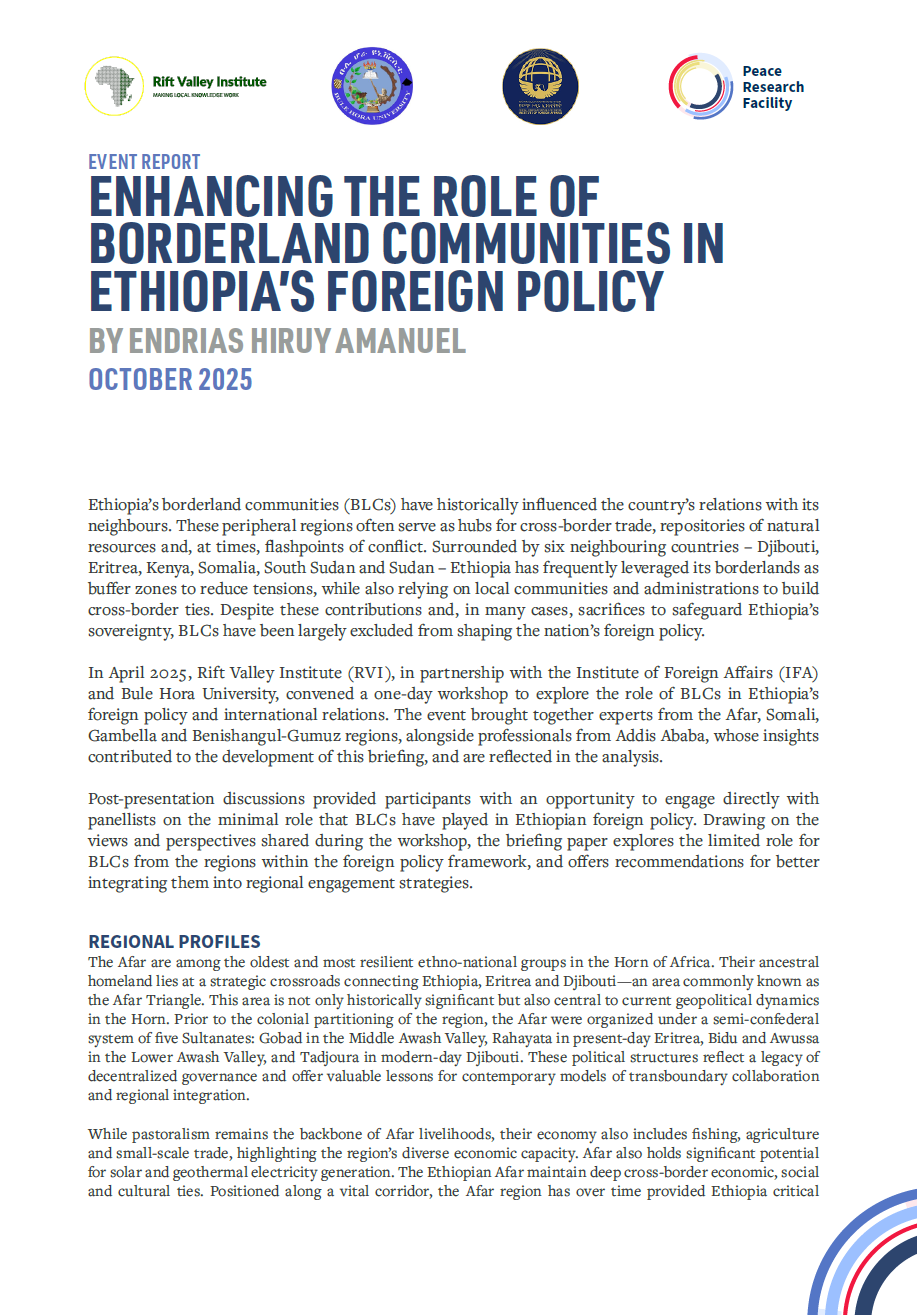
Enhancing the Role of Borderland Communities in Ethiopia’s Foreign Policy
October 15, 2025
Ethiopia’s borderland communities (BLCs) have historically influenced the country’s relations with its neighbours. These peripheral regions often serve as hubs for cross-border trade, repositories of natural resources and, at times, flashpoints of conflict. Surrounded by six neighbouring countries – Djibouti,

